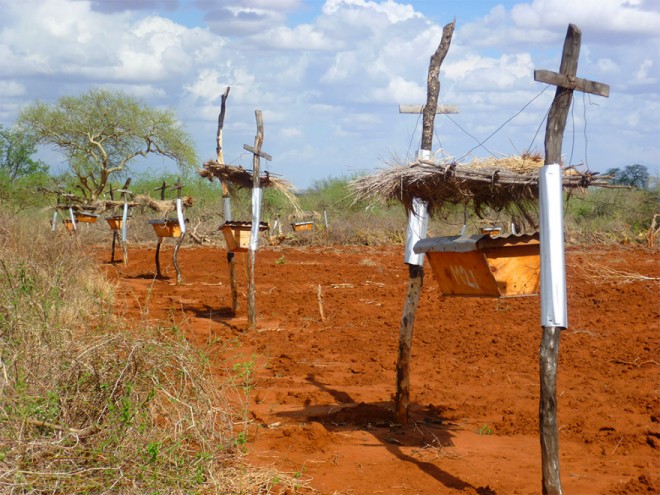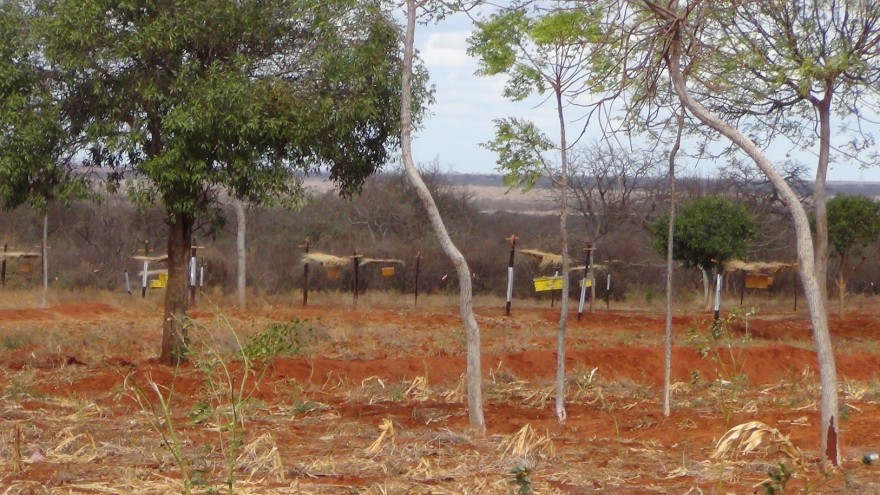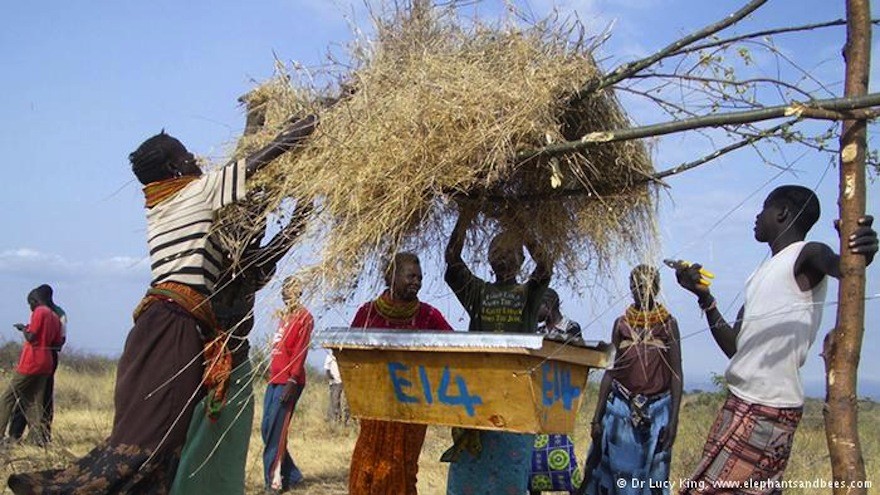Farmers in Kenya, Botswana, Mozambique, Tanzania, Uganda and Sri Lanka were under threat of losing their crops to the persistent threat of wild elephants trampling their crops. In Kenya, conflict between humans and elephants would occur frequently with rare casualties occurring on both sides.
Zoologist Dr Lucy King designed the beehive fence, a low cost, organic system to diminish the threat of elephants trampling the farmers’ crops. Elephants, despite their large stature and leathery skin, avoid bees and sound an alarm when they encounter them.
The delicate skin of elephant calves and the insides of the adults’ trunks are vulnerable to bee stings and the sound of buzzing alone is enough to make elephants leave an area immediately.
Dr King has used this to help save the crops from elephants in rural African and Sri Lankan farms. The system works through a series of beehives mounted on wooden posts, posted at ten-meter intervals. A single wire is threaded around wooden fence posts. To get into the field, an elephant would have to touch either the wire or the hive, disturbing the bees and causing them to swarm out in a buzzing cloud.
The bees pollinate the crops, deter elephants and provide an additional income stream for the farmers who harvest the honey. The honey fence system is an example of interspecies landscape engineering.
Dr King reports that the system has an 80 per cent success rate and costs between $100 and $500 for every 100 meters of fence. The beehive fences are also more ecologically sound because unlike electric fences they keep the wildlife corridors open.









